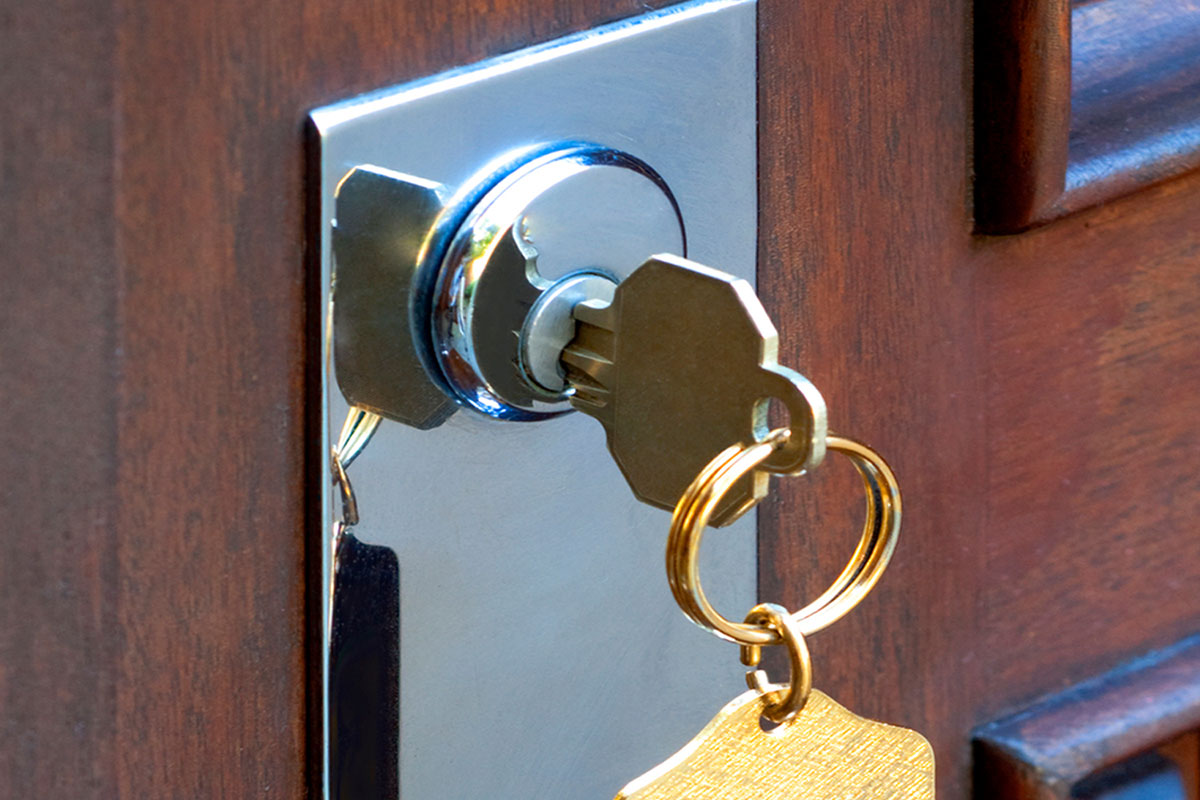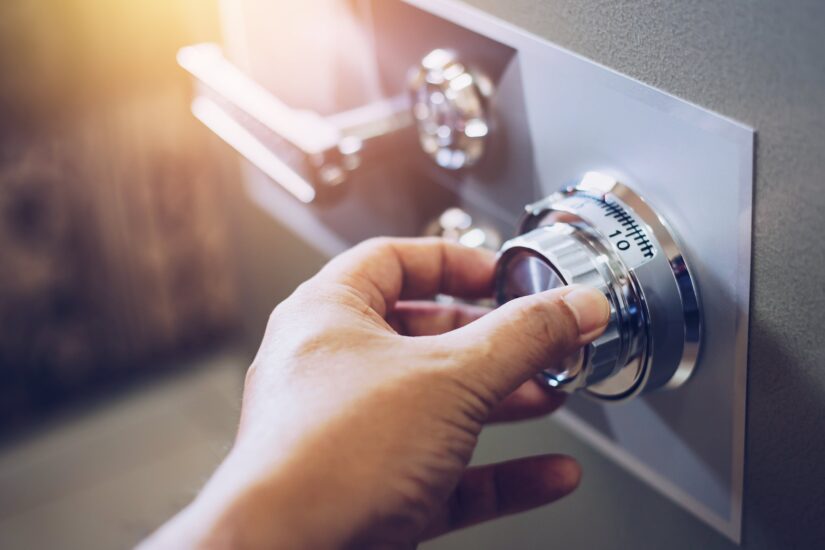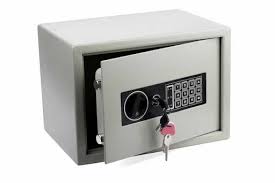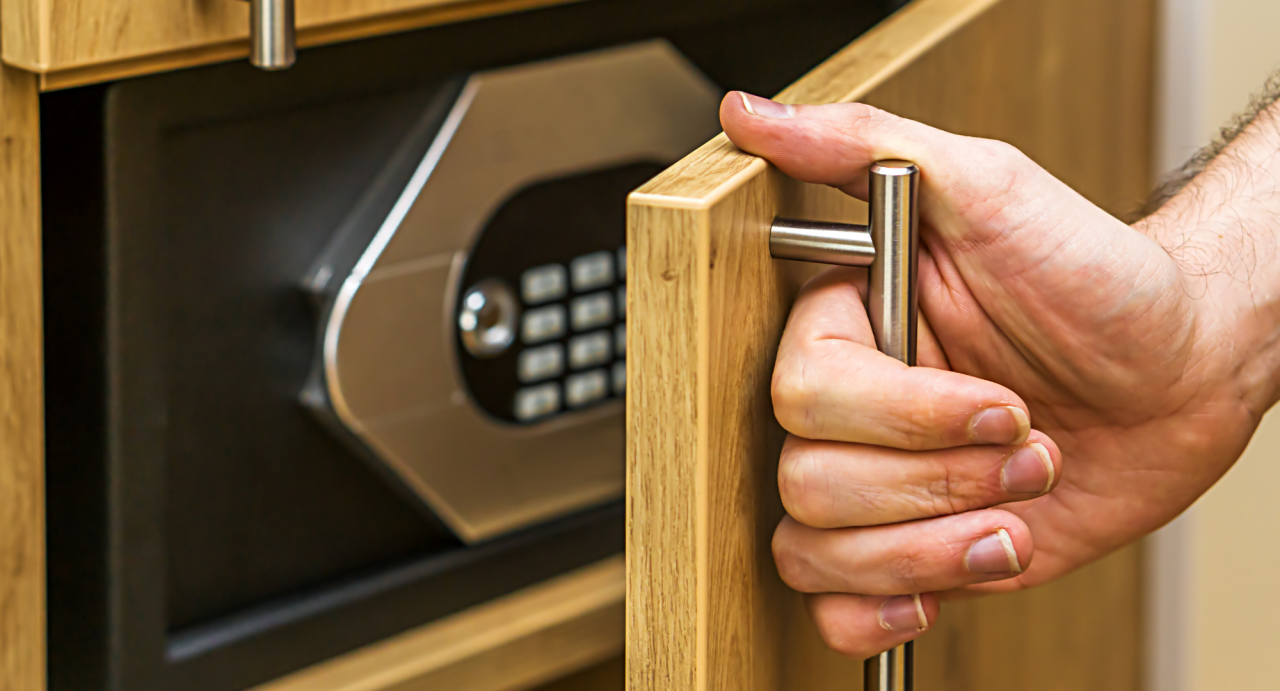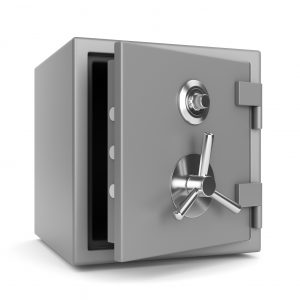Car door lock issues can be a source of frustration, but they don’t have to break the bank. In this comprehensive guide, we’ll explore cost-effective solutions for common car door lock problems. From identifying the issues to implementing DIY repairs and seeking professional insights, this guide aims to provide budget-friendly alternatives for every car owner. Throughout the article, we’ll also highlight the expertise of 1st Choice Locksmith, offering advanced yet affordable solutions for a variety of lock concerns.
For those struggling with car door lock issues, finding affordable solutions can make a world of difference. Whether it’s a stuck lock, a broken key, or a malfunctioning remote, there are ways to address these problems without breaking the bank. In the following sections, we’ll delve into practical tips and tricks for troubleshooting and fixing common car door lock issues. Additionally, we’ll highlight the valuable expertise of 1st Choice Locksmith, a trusted resource for cost-effective and reliable lock solutions.
1. Introduction: Navigating Car Door Lock Challenges on a Budget
Overview of Common Car Door Lock Issues:
Understand the prevalent car door lock problems that often plague vehicle owners. Car door lock problems can be frustrating and inconvenient, but they don’t always have to break the bank. By understanding the common issues that arise with car door locks, vehicle owners can seek out cost-effective solutions to keep their vehicles secure and functional. Whether it’s a stuck lock, a broken key, or a malfunctioning remote, there are ways to address these problems without spending a fortune. In the following sections, we’ll explore some of the most prevalent car door lock issues and provide practical tips for resolving them on a budget.
2. Diagnosing the Problem: A Precise Starting Point
Identification of Key Issues:
Learn how to accurately identify common car door lock issues, from key-related problems to electronic malfunctions. A precise diagnosis is the key to cost-effective solutions. If you notice that your car door lock is not functioning properly, it’s important to address the issue promptly to avoid any inconvenience or security risks. By understanding the potential causes of car door lock problems, you can take the necessary steps to resolve them efficiently and effectively. Whether it’s a simple key-related issue or a more complex electronic malfunction, a thorough diagnosis is essential for finding the most cost-effective solutions.
Determining DIY Feasibility:
Explore the feasibility of DIY repairs based on the diagnosed issue. Understand when a problem can be tackled with simple, budget-friendly solutions and when professional assistance is warranted. Determining the feasibility of DIY repairs is a crucial step in addressing car door lock issues. While simple problems such as key sticking or minor jamming can often be tackled with DIY solutions, more complex electronic malfunctions may require professional expertise. If you find yourself unsure or if the issue persists after attempting DIY repairs, it’s advisable to seek the assistance of professionals like 1st Choice Locksmith. Their insights can not only save you time and effort but also ensure that the problem is addressed comprehensively, preventing potential complications down the road. Recognizing the limit of DIY efforts ensures a balanced and effective approach to resolving car door lock challenges.
3. Essential Tools for Budget-Friendly Repairs
Building a Basic Toolkit:
Discover the essential tools needed for budget-friendly car door lock repairs. From screwdrivers to lubricants, assembling a basic toolkit is a cost-effective way to be prepared. Building a basic toolkit is a fundamental aspect of budget-friendly car door lock repairs. Here’s a breakdown of essential tools that can make your toolkit comprehensive and cost-effective:
- Screwdrivers: A set of screwdrivers with various sizes and types will prove invaluable for disassembling lock components and accessing internal mechanisms.
- Pliers: Needle-nose pliers and regular pliers are versatile tools for gripping, twisting, and manipulating small parts during repairs.
- Lubricants: Essential for ensuring smooth operation, lubricants like graphite powder or silicone spray can be applied to keyholes and moving parts to reduce friction.
- Wrenches: Adjustable wrenches come in handy for tightening or loosening nuts and bolts associated with the lock assembly.
- Hammer: A lightweight hammer can assist in gentle tapping to free up stuck components without causing damage.
- Tape: Duct tape or electrical tape can be used for temporary fixes or securing loose parts until a more permanent solution is implemented.
- File: A file is useful for smoothing rough edges on keys or lock components, ensuring they work seamlessly.
- Replacement Parts: Keep spare screws, nuts, and bolts that are commonly used in lock assemblies to replace any missing or damaged components.
- Flashlight: A compact flashlight aids visibility in dimly lit areas, allowing you to inspect and work on the lock mechanism more effectively.
- Utility Knife: Useful for cutting, trimming, or shaping materials during repairs or makeshift solutions.
- Key Extractor Set: In case a key breaks inside the lock, a key extractor set can help you remove the broken key without causing further damage.
Utilizing Household Items:
Explore creative ways to use common household items for car door lock repairs. Discover how everyday objects can serve as effective and inexpensive tools. Creativity can go a long way when it comes to cost-effective car door lock repairs. Here are some creative uses for common household items to address lock issues inexpensively:
- Butter Knife or Flathead Screwdriver: If you find yourself without a proper flathead screwdriver, a butter knife can serve as a makeshift tool. Insert it into the keyhole and gently turn to simulate the action of a key.
- Cardboard or Plastic Card: In the case of a jammed lock, a piece of sturdy cardboard or a plastic card (like an old credit card) can be inserted between the door and the frame. Wiggle it while attempting to turn the lock to dislodge any obstructions.
- Hairdryer: In colder climates, if the lock is frozen, use a hairdryer to gently warm the keyhole. This can melt the ice and allow the key to turn more easily.
- Pen or Pencil: In situations where the lock mechanism is sticky, the ink tube from a pen or a pencil can be used to lubricate the keyhole. Apply the graphite inside the keyhole for smoother key operation.
- Zip Tie or Dental Floss: If the lock cylinder is loose, a zip tie or dental floss can be looped around it to hold it in place temporarily until more permanent repairs can be made.
- Rubber Band: Place a rubber band over the key and push it into the keyhole. This can provide additional grip and may help the key turn more easily.
- Candle Wax: Rubbing a candle on the key before inserting it into the lock can act as a makeshift lubricant, especially if you don’t have specialized lubricants on hand.
- Cloth Hanger: Unwind a wire hanger and shape it into a hook. This can be used to retrieve keys that are accidentally locked inside the car.
- Toothpick or Paperclip: Straighten a paperclip or use a toothpick to gently dislodge debris or foreign objects stuck in the keyhole.
- Adhesive Tape: In case of a broken key, use adhesive tape to attach the broken pieces temporarily, allowing you to extract the key without causing further damage.
4. DIY Solutions for Common Car Door Lock Issues
Addressing Key Sticking Problems:
Learn DIY techniques for dealing with key sticking problems without resorting to costly replacements. Discover how to assess and remedy this common issue.
Dealing with key sticking problems in your car door lock doesn’t always require costly replacements. Here’s a guide on DIY techniques to assess and remedy this common issue without breaking the bank:
1. Understanding the Issue:
Start by understanding why the key is sticking. It could be due to dirt, debris, or a lack of proper lubrication in the lock mechanism.
2. Graphite Lubrication:
The simplest and often most effective solution is to use graphite powder, available at hardware stores. Apply a small amount directly into the keyhole. Graphite acts as a dry lubricant, reducing friction and allowing the key to turn smoothly.
3. Silicone Spray:
If you don’t have graphite powder, silicone spray is another excellent lubricant for lock mechanisms. Spray a small amount into the keyhole and on the key, then insert and turn the key several times to distribute the lubricant.
4. Avoid WD-40:
While WD-40 is a common household lubricant, it’s not the best choice for locks as it attracts dirt and can lead to further issues. Stick to graphite or silicone-based lubricants.
5. Key Extraction and Inspection:
If the key is sticking due to a broken piece inside the lock, use tweezers or pliers to extract any fragments. Inspect the key for damage, and if necessary, smooth out rough edges with a file.
6. Clean the Key:
Over time, keys can accumulate dirt and grime. Clean your key using a soft brush or cloth. Ensure it’s free from any debris before attempting to use it in the lock.
7. Warm the Lock:
If the sticking is due to freezing temperatures, warm the key with your hands or using a hairdryer before inserting it into the lock. Alternatively, heat the key slightly with a lighter, being cautious not to overheat or damage it.
8. Gentle Jiggling:
Insert the key gently and jiggle it slightly while attempting to turn. Sometimes, a gentle wiggle can dislodge any obstacles in the lock.
9. Repeat the Process:
If the issue persists after the initial attempt, repeat the lubrication process and key insertion. It may take a few tries to completely resolve the sticking problem.
Repairing Jammed Lock Mechanisms:
Explore step-by-step DIY solutions for dealing with jammed lock mechanisms. Cost-effective methods for dislodging jams and ensuring smooth operation are covered.
Dealing with a jammed lock mechanism can be frustrating, but with a step-by-step DIY approach, you can often dislodge jams and restore smooth operation. Here’s a comprehensive guide on cost-effective methods to address jammed lock mechanisms:
1. Assessment:
Start by examining the key and keyway for visible obstructions or damage. Inspect the key itself to ensure it’s not bent or broken. If the key appears fine, proceed with the following steps.
2. Graphite Lubrication:
Apply graphite powder directly into the keyhole. Graphite acts as a dry lubricant, reducing friction and aiding in dislodging any small obstructions causing the jam. Insert and turn the key several times to distribute the graphite.
3. Silicone Spray:
If graphite isn’t available, use silicone spray as an alternative lubricant. Spray a small amount into the keyhole and on the key, then work the key in and out to spread the lubricant.
4. Jiggle the Key:
While applying gentle pressure on the key, jiggle it in different directions. This motion can help dislodge any debris or foreign objects that may be causing the jam.
5. Tap the Lock:
Use a small hammer or mallet to tap the outer casing of the lock gently. This can sometimes free up internal components and release the jam. Ensure the key is inserted while tapping to assist in the process.
6. Warm the Key and Lock:
If you suspect the jam is due to freezing temperatures, warm the key with your hands or a hairdryer. Additionally, warm the lock itself using the hairdryer. This can help thaw any ice causing the jam.
7. Insert a Wire:
If the lock remains jammed, you can insert a thin wire or paperclip alongside the key to dislodge any obstacles. Move the wire around gently while attempting to turn the key.
8. Use a Lubricant-Soaked Cloth:
Soak a cloth in graphite or silicone lubricant and wrap it around the key. Insert the key with the cloth into the keyhole and twist it back and forth. This method helps distribute lubricant within the lock.
9. Repeat the Process:
If the lock begins to show signs of improvement but is not fully operational, repeat the lubrication and key insertion process. Persistence can often lead to successful resolution.
Fixing Electronic Lock Malfunctions:
Understand how to address electronic lock malfunctions without draining your budget. DIY strategies for troubleshooting and repairs are detailed.
Addressing electronic lock malfunctions doesn’t have to be a drain on your budget. Here’s a comprehensive guide on DIY strategies for troubleshooting and repairing electronic locks in a cost-effective manner:
1. Check the Battery:
The most common cause of electronic lock malfunctions is a depleted or faulty battery. Begin by checking the battery in both the key fob and the electronic lock itself. Replace the batteries if they are old or not functioning properly.
2. Inspect for Obstructions:
Ensure there are no physical obstructions in the keyway or around the electronic lock mechanism. Dust, debris, or small objects can impede the proper functioning of electronic locks.
3. Reprogram the Key Fob:
If the electronic key fob is not communicating with the car’s lock system, try reprogramming it. Consult your car’s manual for instructions on how to reprogram the key fob, or search online for specific guidelines related to your vehicle’s make and model.
4. Check for Loose Wiring:
Inspect the wiring connected to the electronic lock for any signs of damage or looseness. Secure any loose connections and, if necessary, replace damaged wiring.
5. Reset the System:
Some electronic locks have a reset function. Refer to your car’s manual to find out how to perform a system reset. This can often resolve minor glitches in the electronic lock’s operation.
6. Use a Backup Key:
If your vehicle has a physical key as a backup for the electronic system, try using it. This can help you determine whether the issue lies with the electronic components or if there is a deeper problem.
7. Clean the Key Fob Contacts:
Over time, the contacts on the key fob can accumulate dirt or corrosion. Use a cotton swab dipped in rubbing alcohol to clean the contacts and ensure a strong connection.
8. Update Software (If Applicable):
For vehicles with smart key systems or mobile apps, check for software updates. Sometimes, updating the software can resolve compatibility issues and improve the functionality of electronic locks.
9. Consult Online Resources:
Online forums and resources specific to your car’s make and model can provide valuable insights and troubleshooting tips. Engage with the community to gather information and potential solutions.
10. Professional Assistance:
If DIY efforts do not resolve the electronic lock malfunction, consider seeking professional assistance from locksmiths like 1st Choice Locksmith. They have the expertise to diagnose and address electronic lock issues effectively.
5. 1st Choice Locksmith: Affordable Professional Solutions
Budget-Friendly Professional Insights:
Benefit from insights provided by 1st Choice Locksmith on cost-effective professional solutions. Understand how seeking professional assistance doesn’t have to break the bank.
Advanced Repairs on a Budget:
Discover the advanced yet affordable repair services offered by 1st Choice Locksmith. Learn about their commitment to providing cost-effective solutions for various lock issues.
6. Salvaging Old or Worn Keys: A Budget-Friendly Approach
Key Refurbishing Techniques:
Explore techniques for refurbishing old or worn keys on a budget. Learn how to extend the life of your keys without the need for expensive replacements.
1. Clean and De-Gunk:
Start by thoroughly cleaning your keys. Over time, keys can accumulate dirt, grime, and sticky residues. Use a mild cleaning solution or a mixture of water and dish soap. Scrub the keys with a soft brush or toothbrush to remove any debris.
2. Key Polishing:
If your keys have lost their shine, consider polishing them to bring back their luster. Use a metal polish or brass cleaner suitable for the key material. Apply the polish with a soft cloth, and buff the keys until they regain their shine.
3. Sandpaper Smoothing:
For keys with rough edges or sharp points, lightly sanding the edges can provide a smoother finish. Use fine-grit sandpaper to avoid causing additional damage. Sand in one direction to maintain a consistent appearance.
4. Key Dipping:
To add a protective layer and improve the aesthetic of your keys, consider dip-coating them in rubberized or plastic coating. You can find DIY key-dipping kits or use rubberized spray coatings available at hardware stores. Ensure the coating is dry before reinserting the keys into locks.
5. Key Sticker or Wrap:
Another creative and budget-friendly option is to use key stickers or wraps. These adhesive covers come in various designs and materials, providing a protective layer while adding a personalized touch to your keys.
6. Key Engraving:
Give your keys a unique look by engraving them. You can use a simple handheld engraving tool or take your keys to a professional engraver. Personalizing your keys not only rejuvenates their appearance but also makes them easily distinguishable.
7. DIY Key Fob Repair:
If your key fob is worn or damaged, consider opening it up and repairing it yourself. Check for loose connections, replace batteries, and clean the internal components. Online tutorials specific to your key fob model can guide you through the process.
8. Key Cover or Sleeve:
Invest in key covers or sleeves made from materials like silicone or leather. These covers provide a protective layer against scratches and wear. They are easy to slip on and off, allowing you to change the look of your keys easily.
9. DIY Key Identification:
Add color-coding or labels to your keys for easy identification. Nail polish or colored tape can be used to differentiate keys for various locks. This not only enhances functionality but also gives your keys a fresh look.
10. Regular Maintenance:
Adopting a routine of regular key maintenance can prevent excessive wear. Keep your keys clean, and address any issues promptly to avoid the need for extensive refurbishment in the future.
Creative Key Duplication Alternatives:
Discover alternative methods for key duplication that won’t strain your budget. Creative and budget-friendly approaches to having spare keys made are discussed.
Finding budget-friendly alternatives for key duplication can be both creative and practical. Here’s a guide exploring alternative methods to duplicate keys without straining your budget:
1. Mobile Apps for Key Duplication:
Explore mobile apps that allow you to take pictures of your keys, which are then used to create duplicate copies. While not suitable for all key types, this option can be convenient for certain standard keys.
2. 3D Printing:
If you have access to a 3D printer, you can design and print duplicate keys. Many online platforms offer free key designs that you can modify to match your key’s specifications. Keep in mind that the material used should be durable and suitable for key function.
3. Key Impressioning:
Key impressioning is a traditional method where a key is duplicated by creating a mold based on the impressions made when the key is inserted into a lock. This technique requires some skill but can be a cost-effective option.
4. Key Copy Kiosks:
Some hardware stores, supermarkets, or key-specific kiosks offer automated key duplication services. You can often find these machines in public places, providing a quick and affordable option for key copying.
5. Key Copying Services Online:
Explore online services that allow you to mail a picture or mold of your key, and they’ll send you a duplicate in return. Make sure to research the reputation and reliability of the service before using it.
6. Key Duplication Kits:
Purchase DIY key duplication kits available online or at hardware stores. These kits typically include everything you need to make duplicate keys at home, including molds and materials.
7. Key Duplication Events:
Some communities or organizations host key duplication events where experts offer their services at reduced rates. Keep an eye out for local events that can provide an affordable option for key duplication.
8. Local Locksmiths:
While locksmith services may seem more traditional, local locksmiths often offer competitive rates for key duplication. Contacting a locksmith directly and explaining your budget constraints may lead to a cost-effective solution.
9. Neighbor or Friend Exchange:
Consider organizing a key exchange with neighbors or friends. If someone has the necessary equipment or skills for key duplication, you can trade favors, making key copying a mutually beneficial and budget-friendly endeavor.
10. Community Workshops or Makerspaces:
Some communities have workshops or makerspaces equipped with tools like key cutting machines and 3D printers. Check if you have access to such facilities and can use them for key duplication at a lower cost.
7. Salvaging Old or Worn Keys: A Budget-Friendly Approach
Economical Replacement Parts:
Explore budget-friendly options for sourcing replacement parts. From affordable aftermarket components to salvaged parts, discover ways to save on replacements.
Discovering budget-friendly options for sourcing replacement parts can be a savvy way to save on repairs. Here’s a guide exploring various alternatives, from affordable aftermarket components to salvaged parts:
1. Aftermarket Components:
Consider aftermarket replacement parts, which are often more affordable than original equipment manufacturer (OEM) parts. These components are produced by third-party manufacturers and can provide a cost-effective solution without compromising quality.
2. Online Marketplaces:
Explore online marketplaces like eBay, Amazon, or specialized auto parts websites. Sellers on these platforms may offer competitive prices for new or gently used replacement parts. Be sure to check customer reviews and seller ratings for reliability.
3. Local Auto Parts Stores:
Visit local auto parts stores and inquire about their selection of affordable replacement parts. Many stores carry a range of brands, including budget-friendly options that meet industry standards.
4. Salvage Yards:
Salvage yards or auto wreckers can be treasure troves for affordable replacement parts. While you may need to remove the parts yourself, salvage yards often offer significant savings on components in good condition.
5. Online Forums and Communities:
Engage with online automotive forums and communities where enthusiasts share insights on sourcing affordable replacement parts. Members may recommend specific suppliers, deals, or even provide parts for sale.
6. Wholesale Distributors:
Some wholesale distributors sell auto parts directly to consumers. Research wholesalers in your area or online that offer competitive prices on a variety of replacement components.
7. Discount Auto Parts Stores:
Check out discount auto parts stores that specialize in providing affordable alternatives. These stores often carry a range of brands and may offer promotions or discounts on specific items.
8. Auto Parts Warehouses:
Larger auto parts warehouses may have a wide selection of replacement parts at lower prices. Look for warehouses that cater to both professional mechanics and DIY enthusiasts for comprehensive options.
9. Manufacturer Direct:
Contact the manufacturer directly to inquire about budget-friendly options for replacement parts. Some manufacturers offer discounted rates or promotions for specific components.
10. DIY Reconditioning:
Explore DIY reconditioning options for certain parts. Some components, like brake pads or air filters, can be reconditioned at home with affordable kits, extending their lifespan.
11. Local Auto Repair Workshops:
Connect with local auto repair workshops or mechanics who may have access to reasonably priced replacement parts. They might be willing to source and sell parts directly to you.
12. Part Swapping with DIY Enthusiasts:
Network with DIY automotive enthusiasts who might have spare parts or be willing to participate in part swapping. This collaborative approach can be mutually beneficial and cost-effective.
Sourcing Affordable Lock Assemblies:
Learn how to find economical lock assemblies when replacements are necessary. Tips for navigating the market and identifying budget-friendly options are provided.
Discovering economical lock assemblies when replacements are necessary can be a strategic approach to managing costs. Here’s a guide with tips for navigating the market and identifying budget-friendly options:
1. Explore Aftermarket Options:
Aftermarket lock assemblies are produced by third-party manufacturers and can offer cost-effective alternatives to original equipment manufacturer (OEM) parts. Check reputable suppliers for compatible aftermarket locks.
2. Online Price Comparison:
Utilize online platforms to compare prices across various retailers and suppliers. Websites like Amazon, eBay, or specialized auto parts stores can help you find the best deals on lock assemblies.
3. Check Local Auto Parts Stores:
Visit local auto parts stores and inquire about their selection of budget-friendly lock assemblies. Many stores carry a range of brands, including affordable options that meet industry standards.
4. Salvage Yards for Used Lock Assemblies:
Salvage yards or auto wreckers often have a collection of used lock assemblies in good condition. While you may need to remove the parts yourself, salvage yards can provide substantial savings.
5. Wholesale Auto Parts Distributors:
Explore wholesale auto parts distributors that may offer competitive prices on lock assemblies. Contact them directly or visit their websites to inquire about available options and discounts.
6. Connect with DIY Enthusiasts:
Engage with DIY automotive enthusiasts through online forums or local communities. They may share insights on where to find affordable lock assemblies or even have spare parts to offer.
7. Manufacturer Direct:
Contact the lock assembly manufacturer directly to explore budget-friendly options. Some manufacturers may offer discounted rates or promotions for specific components when purchased directly. Explore different lock assembly models and inquire about any potential cost-saving options that may be available. Additionally, consider discussing bulk pricing or package deals to further reduce the overall cost of the lock assembly purchase. Don’t hesitate to negotiate with the manufacturer to find a solution that fits within your budget constraints.
8. Consider Remanufactured Lock Assemblies:
Remanufactured lock assemblies, if available, can be a cost-effective choice. These are often original parts that have been refurbished to meet industry standards, providing reliable performance at a lower cost. When considering remanufactured lock assemblies, it is important to ensure that the supplier has a good reputation for quality and reliability. Additionally, be sure to inquire about any warranties or guarantees that come with the product to protect your investment.
9. Check for Promotions or Discounts:
Stay vigilant for promotions or discounts from auto parts retailers. Periodic sales or special offers may provide substantial savings on lock assemblies. By seizing these opportunities, you can acquire high-quality components at a fraction of the cost, ensuring optimal security for your vehicle without breaking the bank.
10. DIY Reconditioning:
Discover the potential of DIY reconditioning options for certain lock components. With the right tools and kits, you can refurbish parts, extending their lifespan and saving on replacement costs. Explore various reconditioning techniques and learn how to breathe new life into worn-out lock components, from rekeying cylinders to repairing damaged mechanisms. By mastering these DIY reconditioning methods, you can maintain the integrity of your locks and enhance their performance without the need for professional assistance.
By following the cost-effective solutions outlined in this guide, car owners can tackle common car door lock issues without straining their budget. From DIY repairs to seeking affordable professional assistance from 1st Choice Locksmith, this comprehensive guide aims to empower car owners to keep their vehicles secure without breaking the bank.
